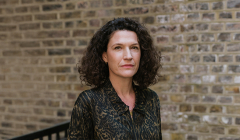
‘A lot of people feel stuck at the moment’
Sara Tate, European Transformation Practice Partner at TwentyFirstCenturyBrand, on why storytelling drives brand transformation.

At Advertising Week Europe a panel of experts debated if diversity and inclusion and sustainability were in danger of becoming mutually exclusive pursuits.

The world is facing increasing levels of global uncertainty and with reduced budgets, businesses are looking to invest in what brings growth. This is a conundrum which has led to the extremely important issues of sustainability and diversity and inclusion being played off against one another. But what challenges exist for each route? What tensions? In a lively discussion at Ad Week Europe the panel of experts debated which should be led with; diversity and inclusion or sustainability?
In a discussion led by Creative Equals’ Partnerships Director, Debbie Tembo, the panelists; Efrain Ayala, Global Director of Diversity and Inclusion, Marketing, Reckitt, Alice Moore, Global Purpose-Led Brand Director and Chief Purpose Officer, Reckitt, Esther Duran, Chief Design Officer, Zone and Nicola Kemp, Editorial Director, Creativebrief; explored the tensions between sustainability and DEI.
Championing a sustainability first approach Moore reminded the room that there is only one planet with finite resources. With the population increasing rapidly, looking after the planet is essential to in turn look after the people who inhabit it. Moore encourages asking ‘and’ questions such as “How can we satisfy stakeholders AND be sustainable?” and suggests looking to the UN’s 17 sustainability goals to see which one a business can go about making progress on.
For Reckitt, this approach of looking to the UN’s SDG goals and lining up each brand with one has led to groundbreaking work that has made a positive impact on both the environment and in turn its people. Moore pointed to the example of Finish and its alignment to SDG goal 6; access to water and sanitation. Where the brand knew that Turkey was “11 years from being water-poor” in the region it campaigned for more efficient use of dishwashers to change behaviours to ‘skip the rinse.’ Results saw reduced water consumption in households by 20%, showing the brand make huge strides towards goal 6 and improving conditions for people; a sustainable development approach to deliver on issues that also have a significant societal impact.
Duran urges the audience to “use design to change the narrative”, taking an approach that considers people first as it is people that make change. She points to the fact that often digital trends leave people aside such as the elderly or people without internet connection that don’t have access to tools many take for granted such as online banking.
Designing for a tiny part of the population leaves people behind and the digital transformation era “cannot afford to be a case of trial and error.” Digital needs to be inclusive and sustainability is linked to DEI, Duran explains; “The internet would be the 3rd largest polluter if it were a country, we need to think of people first and digital sustainability needs to be done now.”
Yet, when it comes to diversity “brands cannot be everything to everyone” added Ayala. DEI cannot be a tick box exercise and instead brands need to consider which community they can authentically target. Ayala reinforced the importance of having clear brand values and goals and Reckitt’s strategy of matching values with an SDG goal. They explained that this too must be done in a DEI first approach. For brands to truly make a positive impact on a community they must have a clear audience that aligns, know the barriers to entry and behaviours that need to be changed and also look to the people within that community who are left behind to bring them in.
“The world's to-do list is long. So are our own personal to-do lists,” explained Kemp, who warned: “If we are forced to choose we all lose.” In the question of choosing diversity and inclusion or DEI, the two are so intrinsically linked that choosing one requires separating them; an impossible task. Kemp called on the need to “collaborate, not compete and call out when the two are played off against each other as a bargaining tool.” The true issue is that at present, diversity and inclusion and sustainability are both seen as ‘extracurricular’ side projects rather than a core part of business.
Kemp raises the examples of Apple launching with a lack of a period tracker as evidence of the brand's huge blind spot when it comes to designing for everyone. Similarly, the increased time spent in teams meetings since the pandemic shows that the heralded ‘people first approach’ is rarely happening in practice, where people's time is still taken for granted. Instead, she urges for “innovation and intersectionality in every aspect of work.”
Tembo left audiences with the poignant question; “What is the legacy we want to leave behind as marketers?” As the diversity and inclusion, sustainability trade-off is a fight with no winners, only together are the two able to thrive and see positive meaningful change.
Looks like you need to create a Creativebrief account to perform this action.
Create account Sign inLooks like you need to create a Creativebrief account to perform this action.
Create account Sign in